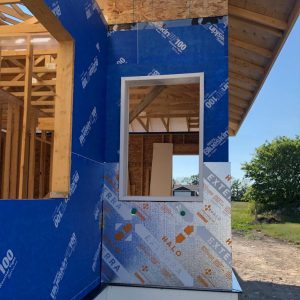Did you know that XPS insulation in its current form may soon be banned from general use in some of the most populous US states? That’s right, the darling of building codes is slowly falling into disfavor, and it’s all thanks to Hydrofluorocarbons – a tiny yet harmful component used in XPS production.
This post will talk about the upcoming legislation and clean, compliant, and better-performing alternatives to XPS.
But first:
What Are Hydrofluorocarbons (HFCs)?
HFCs are a type of human-made Greenhouse Gas (GHG). They are an industrial chemical, typically used in refrigeration, but also as a blowing agent in insulation foam. Though they’ve only been around since the 1990s, HFCs are some of the fastest-growing GHGs on our planet.
Why Are HFCs Harmful?
These GHGs are 1,430 times more damaging to our planet’s climate than CO2. And, they can remain in the atmosphere for 29 years after their release. In recent years, however, governments have noted HFCs’ harmful nature and are taking steps to curb their use.
Which Insulation Products Contain HFCs?
Many extruded polystyrenes, aka XPS, are produced with HFC-134a and HFC-142b. These are blowing agents used to manufacture the foam boards. These GHGs are 1,420 and 2,310 more crippling to the Earth’s climate than CO2, respectively. To this end, the US Climate Alliance – a coalition of states determined to meet the Paris Agreement’s goals – has started to prohibit HFCs in its jurisdictions. Several of these states have upcoming bans on using HFCs in XPS production.
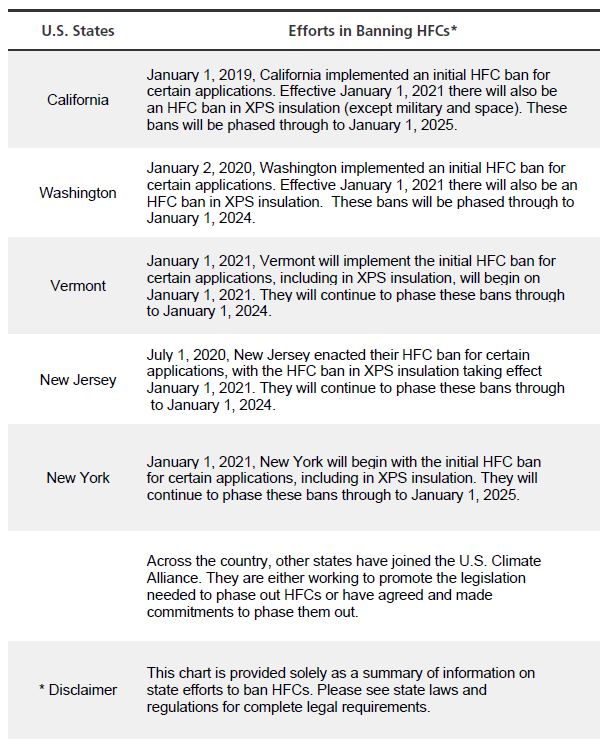

Don't miss a thing!
Subscribe for exclusive content, insider industry news and limited edition webcasts.
What Are Some Alternatives to HFC-Laden Insulation Products?
Luckily, HFCs don’t necessarily translate to quality in insulation. BASF Neopor’s Graphite Polystyrene (GPS) is HFC-free and, in the opinion of many builders, works better than XPS. GPS is a rigid insulation product based on Expanded Polystyrene (EPS). GPS does not use HFCs as a blowing agent in its production. In fact, comparable GPS products can have as much as 21 times less embodied carbon than some XPS products.
But Neopor isn’t just plain old EPS repackaged under a fancy name. Its EPS foam is infused with graphite particles, which have a superb ability to trap and reflect heat. Thanks to the graphite, GPS offers the same thermal resistance as its XPS counterpart, at about R-4.7 per inch.
What’s more, the EPS foam core is less susceptible to deterioration. Where XPS R-values drop over time as the foam ages, EPS foam stays intact far longer, and sustains its original R-value through decades of service.
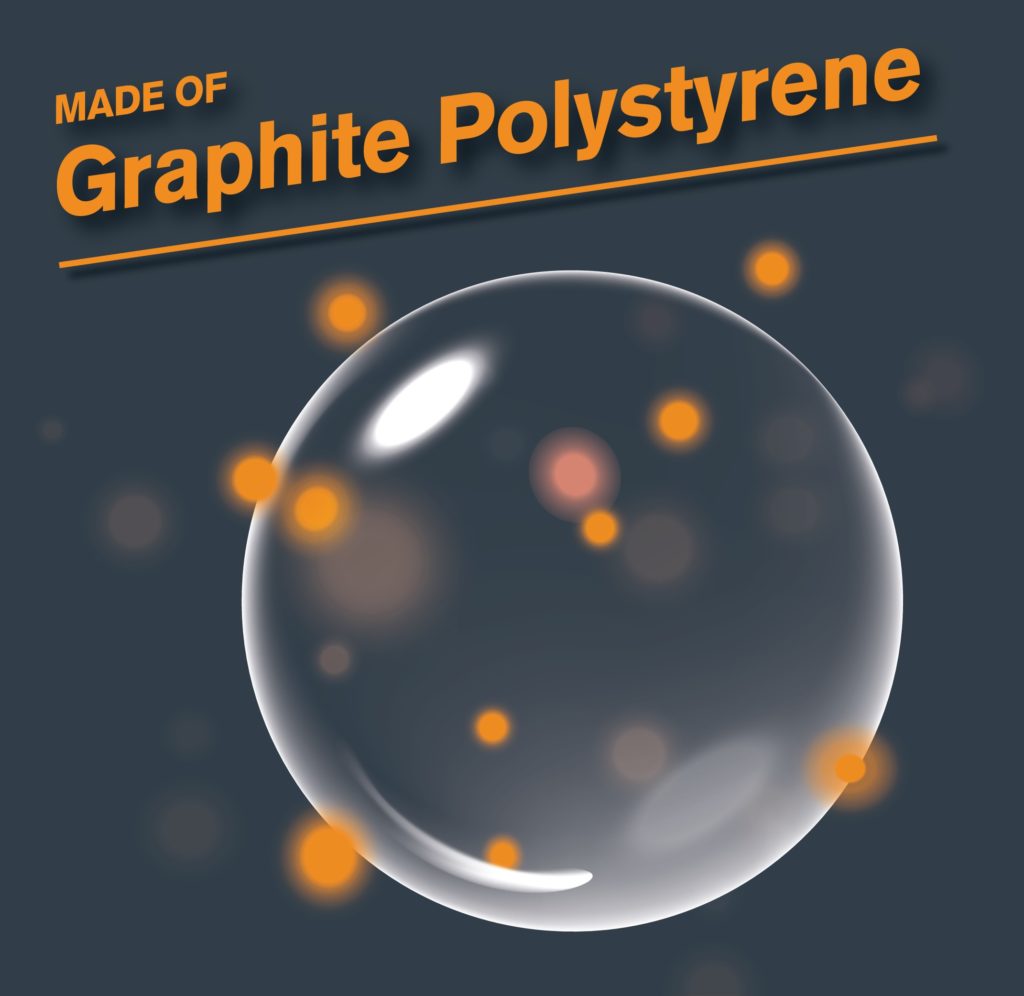
What Is Halo’s GPS Insulation?
Halo’s insulation products are manufactured with Neopor’s GPS foam cores and contain no HFCs while bringing XPS-like R-values to the table. Apart from high R-values, each of Halo’s 3 product series is engineered with a specific purpose in mind.
Halo Exterra
The Exterra series is designed for exterior applications. Its GPS core features a perforated laminate coating on both sides, making the panel breathable yet water-resistive. Thanks to this composition, Exterra handily replaces house wrap, so there’s one less installation step to worry about.
Halo Subterra
The Subterra is engineered for below-grade use. There are 2 types of laminate to choose from – either a thick polypropylene film for waterproofing or an extra-tough, cross-woven laminate for increased job site durability. Regardless of the laminate, Subterra panels are flexible and easily conform to radius walls, while the under-slab application serves as an effective Radon barrier.
Halo Interra
The Interra panels are made with interior applications in mind. That’s why their laminate coating reflects heat back inside a home and doubles as a vapor barrier. Interra Plus panels can be used in most US jurisdictions without a thermal or ignition barrier in residential and commercial occupancies.
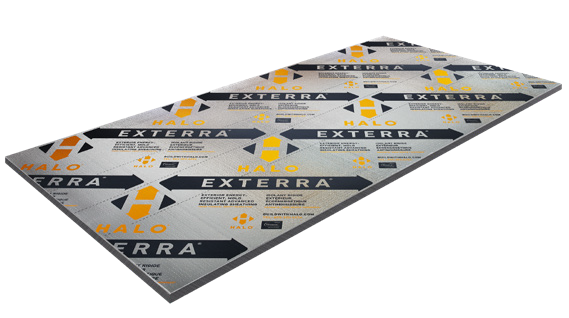
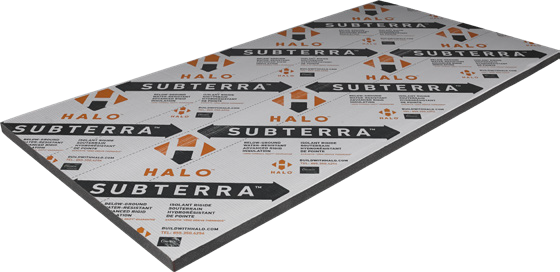
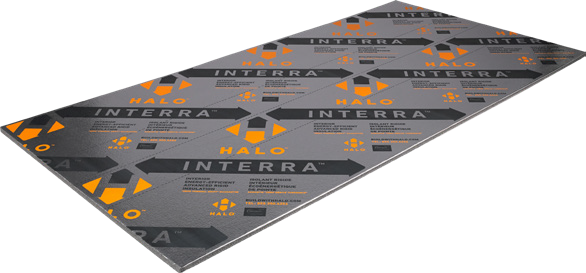
Wrapping It Up
As the Climate Alliance is gradually banning HFCs, and the entire US is on track to re-join the Paris Agreement, XPS in its current form may soon cease to be a compliant insulation option. Luckily, XPS is not the only high-performance product on the market. With high, long-lasting R-values and a 0-HFC content, Halo’s GPS is already a better, cleaner alternative.

